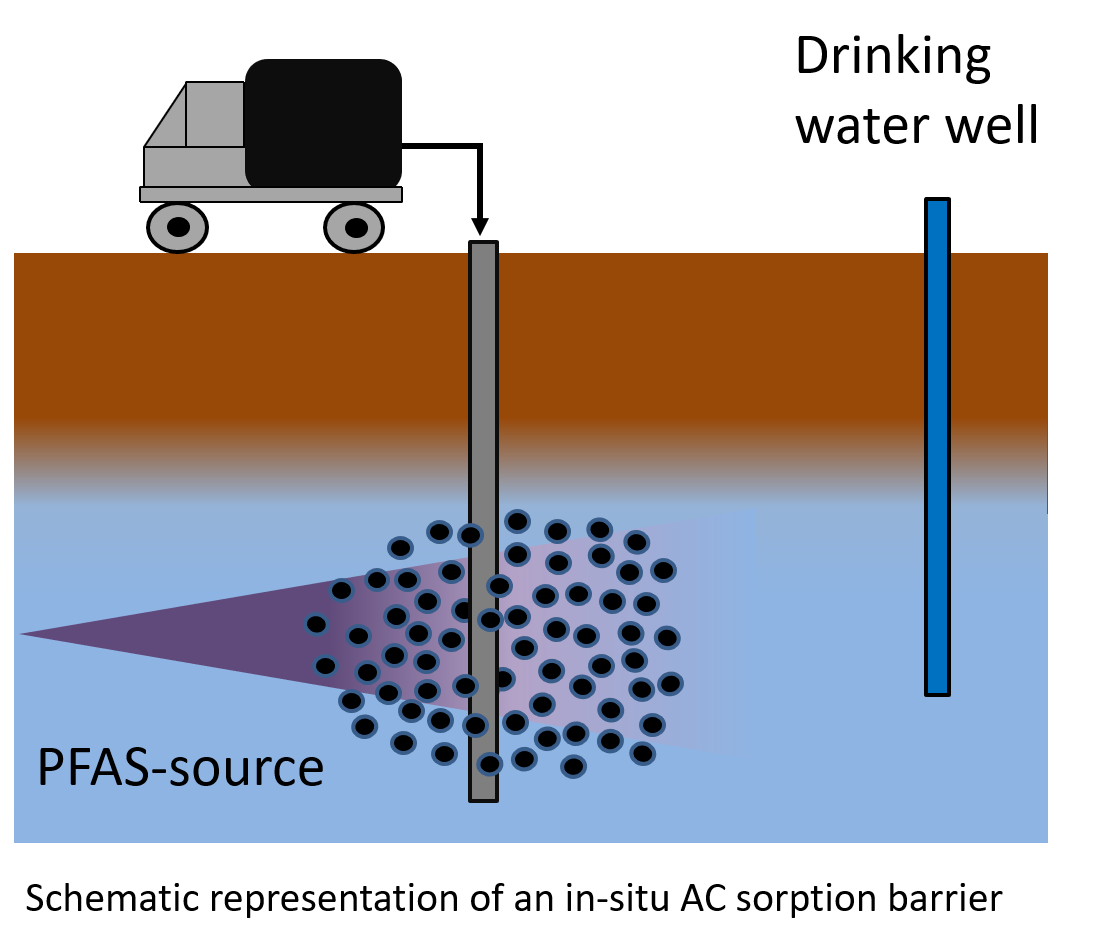
In-situ sorption barriers for PFAS-contaminated sites
Long-term behavior and sustainable management
One of the greatest challenges in dealing with PFAS contamination is the rapid and widespread spread of contamination plumes in groundwater. The only in-situ remediation method currently available to stop the spread of PFAS (perfluorinated and polyfluorinated alkyl compounds) in groundwater is the installation of so-called in-situ sorption barriers made of colloidal activated carbon (CAC). Due to the simple and quick installation as well as the effective cleaning effect of the CAC introduced for a broad PFAS spectrum, the demand for the installation of in-situ barriers has risen steadily in recent years. However, the long-term handling of the loaded barriers is still completely unclear.
The project therefore aims to develop the basis for an innovative solution for the sustainable management of in-situ sorption barriers. The basic idea is to recover the concentrated pollutant load through a combination of targeted mobilisation of the CAC-bound PFAS and hydraulic measures (controlled pumping of the eluate to the surface). The pollutants can then be destroyed by external treatment in technical plants. The approach pursued thus combines the advantages of the simple and flexible use of in-situ sorption barriers with efficient treatment of the highly concentrated eluate and should thus enable safe and permanent elimination of the pollutants within a technically and economically viable framework. The focus of the work is on the understanding and targeted control of the physical-chemical processes that are decisive for the immobilisation and mobilisation of PFAS and CAC in the aquifer. The research results will enable a well-founded prediction of the long-term effectiveness and sustainable management of in-situ sorption barriers for the immobilisation of PFAS.
Contact person:
Dr. Ariette Schierz; Jannes Beihsner
Stipendiatenprogramm der Deutschen Bundesstiftung Umwelt
